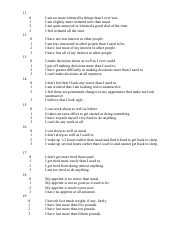
However, there are limitations to the practical value of these factors for predicting suicide risk because they are a common feature of presentations in specialist clinical settings ( Chan et al., 2016). In higher-risk populations, including those with a history of self-harm, conventional risk factors including suicidal ideation, self-harm, gender and physical morbidity are reliable markers of risk for future suicide attempts ( Chan et al., 2016). Prediction of suicidal behavior also did not improve across the course of the 50 year review period, and it was no better for studies with longer follow-ups as might be expected for low prevalence outcomes such as suicidal behavior ( Franklin et al., 2017). This was true even where prediction was based upon ostensibly well-established categories of risk factor, including psychiatric morbidity, prior suicidal ideation and behavior. One major review, synthesizing findings of 365 empirical studies of the prospective prediction of suicidal outcomes from a wide range of risk factors, reached the sobering conclusion that our ability is to predict future suicidal behavior is often little better than chance ( Franklin et al., 2017). However, it has become increasingly clear that our ability to predict future suicidal behavior is poor. It is perhaps understandable then that assessment of suicide risk can become narrowly focused on establishing the presence and severity of a subset of risk factors which are believed to offer the greatest likelihood of accurately predicting a patient's future suicide risk.


Undertaking an assessment of suicide risk represents just one of many activities expected of busy practitioners within general or specialist mental health service settings. O'Connor, in Comprehensive Clinical Psychology (Second Edition), 2022 8.22.4.2 Suicide Assessment and Risk Prediction


 0 kommentar(er)
0 kommentar(er)
